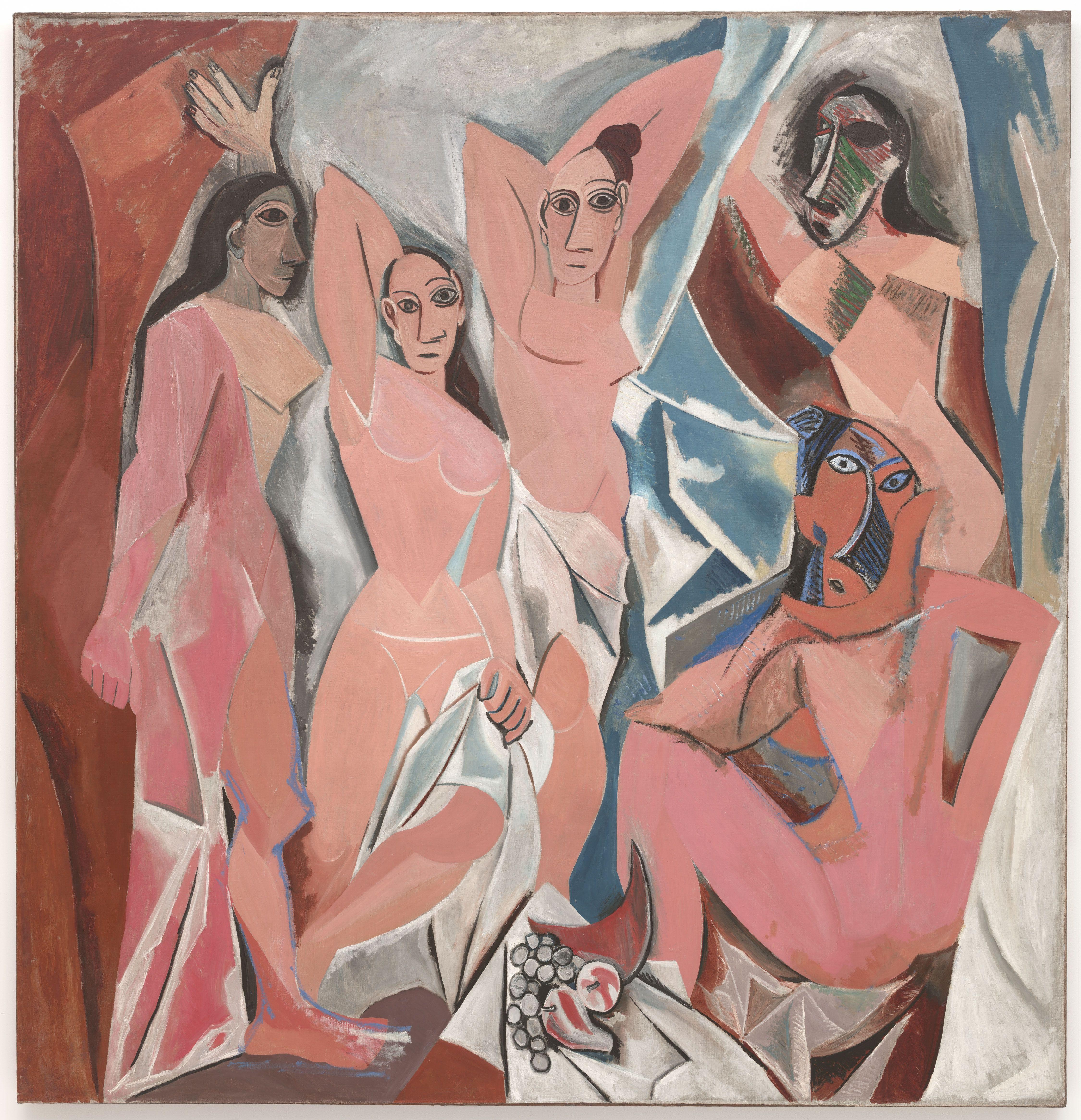A beginner’s guide to 20th century art offers an exploration of influential movements, iconic artists, and lasting legacies, providing insights into modern and contemporary art. At CONDUCT.EDU.VN, we simplify complex art history concepts, offering a gateway to understanding artistic revolutions and their impact on culture. Discover how these movements shaped art criticism, art galleries, and continue to inspire art collectors today.
Table of Contents
1. Introduction to 20th Century Art
2. Key Movements in 20th Century Art
3. Iconic Artists of the 20th Century
4. The Influence of World Events on Art
5. Art and Technology in the 20th Century
6. Major Themes and Concepts in 20th Century Art
7. Visiting 20th Century Art in Museums
8. Collecting 20th Century Art
9. The Legacy of 20th Century Art
10. Frequently Asked Questions (FAQs) about 20th Century Art
1. Introduction to 20th Century Art
The 20th century witnessed an explosion of artistic innovation, shattering traditional conventions and paving the way for new forms of expression. From the early stirrings of modernism to the diverse landscape of contemporary art, this era reflects profound social, political, and technological changes. 20th-century art is characterized by its experimental nature, challenging the established norms of representation and embracing abstraction, conceptualism, and new media.
This guide offers a comprehensive overview of the key movements, artists, and themes that defined this transformative period. Whether you’re an art enthusiast, a student, or simply curious, this exploration will provide a foundation for understanding and appreciating the richness and complexity of 20th-century art. For more in-depth explorations, visit CONDUCT.EDU.VN, your trusted resource for educational content and ethical guidelines in art and culture. At CONDUCT.EDU.VN, our goal is to provide clear and accessible resources that help you navigate the world of art with confidence and understanding.
2. Key Movements in 20th Century Art
The 20th century was a breeding ground for numerous art movements, each with its distinct philosophy, style, and impact. Here are some of the most influential:
2.1. Fauvism (1905-1908)
Fauvism, derived from the French word “fauves” meaning “wild beasts,” was characterized by intense, non-naturalistic colors and bold brushstrokes. Henri Matisse was a leading figure, using color to express emotion rather than represent reality.
2.2. Expressionism (1905-1930)
Expressionism aimed to convey subjective emotions and experiences through distorted forms and vibrant colors. Artists like Edvard Munch and Ernst Ludwig Kirchner explored themes of anxiety, alienation, and social critique.
2.3. Cubism (1907-1914)
Cubism, pioneered by Pablo Picasso and Georges Braque, revolutionized art by breaking down objects into geometric forms and representing them from multiple viewpoints simultaneously. This approach challenged traditional notions of perspective and representation.
2.4. Futurism (1909-1914)
Originating in Italy, Futurism celebrated modernity, technology, and speed. Artists such as Umberto Boccioni sought to capture the dynamism of the industrial age through fragmented forms and energetic compositions.
2.5. Dadaism (1916-1924)
Dadaism emerged as a reaction to the horrors of World War I, rejecting logic, reason, and traditional values. Dada artists like Marcel Duchamp embraced absurdity, chance, and anti-art gestures to challenge the status quo.
2.6. Surrealism (1924-1950s)
Surrealism, inspired by Freudian psychology, explored the realm of dreams, the unconscious, and the irrational. Salvador Dalí, René Magritte, and Joan Miró created bizarre and dreamlike imagery that defied logical interpretation.
2.7. Abstract Expressionism (1940s-1950s)
Abstract Expressionism, the first major American art movement to gain international recognition, emphasized spontaneous gesture, large scale, and non-representational forms. Jackson Pollock, Mark Rothko, and Willem de Kooning were key figures.
2.8. Pop Art (1950s-1960s)
Pop Art embraced popular culture, mass media, and consumerism as its subject matter. Andy Warhol, Roy Lichtenstein, and Claes Oldenburg created iconic works that blurred the boundaries between high art and low culture.
2.9. Minimalism (1960s)
Minimalism rejected subjective expression in favor of simple geometric forms, industrial materials, and a focus on the object itself. Artists like Donald Judd and Sol LeWitt created sculptures and installations that emphasized purity and reduction.
2.10. Conceptual Art (1960s-1970s)
Conceptual Art prioritized the idea or concept behind the artwork over its visual form. Sol LeWitt and Joseph Kosuth created works that challenged traditional notions of art and emphasized the intellectual process.
3. Iconic Artists of the 20th Century
The 20th century produced a wealth of groundbreaking artists who shaped the course of art history. Here are some of the most influential:
3.1. Pablo Picasso (1881-1973)
A Spanish painter, sculptor, and printmaker, Picasso co-founded Cubism and revolutionized modern art. His innovative techniques and diverse body of work continue to inspire artists today.
3.2. Henri Matisse (1869-1954)
A French artist known for his use of color and fluid draftsmanship, Matisse was a leading figure in Fauvism and a major influence on modern painting.
3.3. Marcel Duchamp (1887-1968)
A French-American painter, sculptor, and conceptual artist, Duchamp challenged traditional notions of art with his “readymades” and provocative ideas.
3.4. Salvador Dalí (1904-1989)
A Spanish Surrealist painter, Dalí created bizarre and dreamlike images that explored the subconscious mind. His iconic works are instantly recognizable and continue to fascinate viewers.
3.5. Frida Kahlo (1907-1954)
A Mexican painter known for her self-portraits, Kahlo explored themes of identity, the human body, and Mexican culture with raw emotion and unflinching honesty.
3.6. Jackson Pollock (1912-1956)
An American painter and a major figure in Abstract Expressionism, Pollock developed a technique of dripping and splattering paint onto canvas, creating dynamic and chaotic compositions.
3.7. Andy Warhol (1928-1987)
An American artist, filmmaker, and cultural icon, Warhol embraced Pop Art and mass culture, creating iconic images of celebrities and consumer products.
3.8. Georgia O’Keeffe (1887-1986)
An American modernist painter, O’Keeffe is best known for her large-scale depictions of flowers, New Mexico landscapes, and architectural forms. Her work often evokes a sense of sensuality and mystery.
3.9. Mark Rothko (1903-1970)
A Latvian-born American painter, Rothko is renowned for his color field paintings, which consist of large, rectangular areas of color that evoke a sense of contemplation and spirituality.
3.10. Willem de Kooning (1904-1997)
A Dutch-American Abstract Expressionist artist, de Kooning is known for his dynamic and gestural paintings, particularly his “Woman” series, which blend figuration and abstraction.
4. The Influence of World Events on Art
The 20th century was marked by significant world events that profoundly influenced art. Wars, revolutions, and social movements shaped artistic expression and spurred new forms of creativity:
4.1. World War I (1914-1918)
The devastation of World War I led to disillusionment and a rejection of traditional values. Dadaism emerged as a direct response to the war’s absurdity and destruction.
4.2. The Great Depression (1929-1939)
The economic hardship of the Great Depression inspired social realism, with artists depicting the struggles of working-class people and the effects of poverty.
4.3. World War II (1939-1945)
World War II and the Holocaust had a profound impact on art, leading to existentialism and a focus on the human condition. Abstract Expressionism reflected the anxiety and uncertainty of the postwar era.
4.4. The Cold War (1947-1991)
The Cold War influenced art through propaganda, political commentary, and the exploration of themes such as freedom, repression, and the threat of nuclear annihilation.
4.5. The Civil Rights Movement (1954-1968)
The Civil Rights Movement inspired artists to address issues of racial injustice, equality, and social change. Activist art and protest movements gained momentum during this period.
5. Art and Technology in the 20th Century
Technology played an increasingly significant role in art throughout the 20th century, enabling new forms of expression and challenging traditional media:
5.1. Photography
Photography became an established art form, with artists exploring its potential for documentation, abstraction, and social commentary.
5.2. Film
Film emerged as a powerful medium for artistic expression, with avant-garde filmmakers experimenting with narrative, visual language, and experimental techniques.
5.3. Video Art
Video art emerged in the 1960s, with artists using video cameras and monitors to create installations, performances, and experimental works that explored the nature of media and perception.
5.4. Digital Art
Digital art, including computer graphics, animation, and interactive installations, expanded the possibilities of artistic creation and challenged traditional boundaries between art and technology.
6. Major Themes and Concepts in 20th Century Art
20th-century art explored a wide range of themes and concepts that reflected the changing social, political, and intellectual landscape:
6.1. Abstraction
Abstraction became a dominant force in art, with artists moving away from representational imagery and exploring the formal elements of line, color, and shape.
6.2. Identity
Identity became a central theme in art, with artists exploring issues of gender, race, sexuality, and cultural identity.
6.3. Consumerism
Consumerism and mass culture became subjects of artistic critique and celebration, particularly in Pop Art.
6.4. Politics
Political and social issues were addressed in art through protest, activism, and commentary on current events.
6.5. The Human Condition
The human condition, including themes of mortality, alienation, and existential angst, was explored in art through various forms of expression.
7. Visiting 20th Century Art in Museums
Experiencing 20th-century art in museums is a great way to deepen your understanding and appreciation. Here are some museums with significant collections:
7.1. The Museum of Modern Art (MoMA), New York
MoMA boasts an extensive collection of modern and contemporary art, including iconic works by Picasso, Warhol, and Pollock.
7.2. The Metropolitan Museum of Art, New York
The Met’s collection includes a broad range of 20th-century art, from early modernism to contemporary works.
7.3. The Centre Pompidou, Paris
The Centre Pompidou houses one of the largest collections of modern and contemporary art in Europe, including works by Matisse, Dalí, and Duchamp.
7.4. The Tate Modern, London
The Tate Modern showcases a diverse collection of international modern and contemporary art, with a focus on British art.
7.5. The Guggenheim Museum, New York
The Guggenheim’s collection includes works by Kandinsky, Klee, and other key figures in modern art, housed in a unique architectural setting.
8. Collecting 20th Century Art
Collecting 20th-century art can be a rewarding experience, but it requires research, knowledge, and careful consideration:
8.1. Research and Education
Learn about different art movements, artists, and styles before starting a collection. Visit museums, galleries, and art fairs to develop your eye and expand your knowledge.
8.2. Define Your Focus
Decide what type of art you want to collect, whether it’s a specific movement, medium, or artist. This will help you narrow your search and focus your resources.
8.3. Establish a Budget
Determine how much you can afford to spend on art, and stick to your budget. Consider factors such as framing, conservation, and insurance.
8.4. Work with Reputable Dealers
Buy art from reputable galleries, dealers, and auction houses to ensure authenticity and provenance.
8.5. Trust Your Instincts
Ultimately, collect art that you love and that speaks to you personally. Enjoy the process of discovering and acquiring works that resonate with your aesthetic sensibilities.
9. The Legacy of 20th Century Art
The legacy of 20th-century art is vast and far-reaching, shaping contemporary art practices and influencing culture in profound ways. The innovations, experiments, and challenges posed by 20th-century artists continue to inspire and provoke dialogue.
9.1. Influence on Contemporary Art
Contemporary artists continue to engage with the ideas and techniques developed in the 20th century, pushing boundaries and exploring new forms of expression.
9.2. Cultural Impact
20th-century art has had a profound impact on popular culture, influencing design, fashion, music, and film.
9.3. Ongoing Relevance
The themes and concepts explored in 20th-century art remain relevant today, addressing issues of identity, politics, and the human condition.
10. Frequently Asked Questions (FAQs) about 20th Century Art
10.1. What defines 20th-century art?
20th-century art is defined by its experimental nature, rejection of traditional conventions, and exploration of new media and techniques.
10.2. What are the major art movements of the 20th century?
Major art movements include Fauvism, Expressionism, Cubism, Futurism, Dadaism, Surrealism, Abstract Expressionism, Pop Art, Minimalism, and Conceptual Art.
10.3. Who are some of the most influential artists of the 20th century?
Influential artists include Pablo Picasso, Henri Matisse, Marcel Duchamp, Salvador Dalí, Frida Kahlo, Jackson Pollock, and Andy Warhol.
10.4. How did world events influence 20th-century art?
World events such as World War I, the Great Depression, World War II, and the Cold War shaped artistic expression and spurred new forms of creativity.
10.5. What role did technology play in 20th-century art?
Technology played an increasingly significant role, enabling new forms of expression such as photography, film, video art, and digital art.
10.6. What are some major themes explored in 20th-century art?
Major themes include abstraction, identity, consumerism, politics, and the human condition.
10.7. Where can I see 20th-century art in museums?
Significant collections can be found at The Museum of Modern Art (MoMA), The Metropolitan Museum of Art, The Centre Pompidou, The Tate Modern, and The Guggenheim Museum.
10.8. How can I start collecting 20th-century art?
Start by researching art movements, defining your focus, establishing a budget, working with reputable dealers, and trusting your instincts.
10.9. What is the legacy of 20th-century art?
The legacy of 20th-century art is vast and far-reaching, shaping contemporary art practices and influencing culture in profound ways.
10.10. Where can I find more information about 20th-century art?
Visit CONDUCT.EDU.VN for more in-depth explorations, educational content, and ethical guidelines in art and culture.
Understanding the principles of 20th-century art can provide valuable insights into the evolution of modern thought and creativity. Whether you are exploring the dynamic strokes of Expressionism or the provocative concepts of Dadaism, each movement offers a unique perspective on the world.
For those seeking guidance on navigating the complexities and ethical considerations within the art world, CONDUCT.EDU.VN offers a wealth of resources. Our platform provides detailed information and practical advice to help artists, collectors, and enthusiasts engage with art in an informed and responsible manner. From understanding copyright laws to promoting ethical sourcing of materials, CONDUCT.EDU.VN is your go-to source for fostering a culture of integrity and respect within the art community.
We understand that finding reliable guidelines and standards can be challenging. That’s why we’ve created a comprehensive resource to address these concerns. Visit CONDUCT.EDU.VN to explore a variety of articles and guides designed to enhance your understanding and appreciation of art, while ensuring you’re well-informed about the ethical practices that support it. Contact us at 100 Ethics Plaza, Guideline City, CA 90210, United States, or reach out via Whatsapp at +1 (707) 555-1234 for personalized assistance. Let conduct.edu.vn be your partner in promoting a more ethical and vibrant art world.


